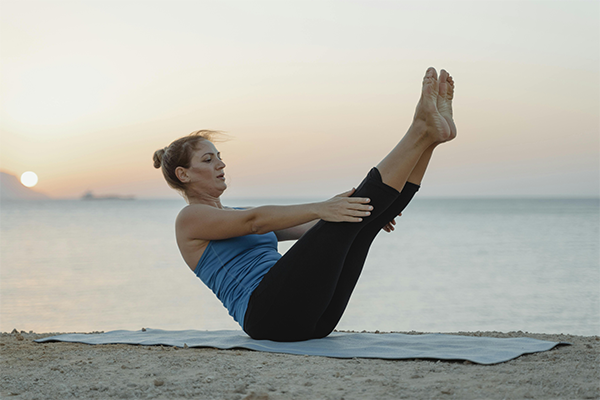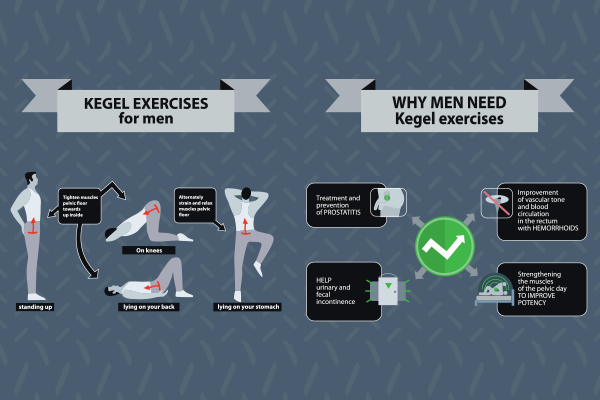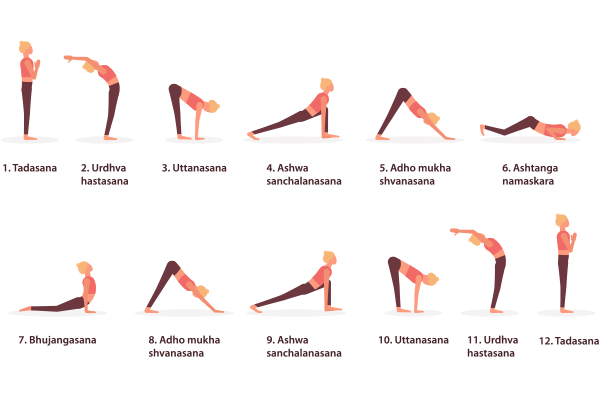
Bladder control is an essential aspect of daily life that many people take for granted. However, millions of individuals struggle with bladder control issues like urgency, frequent bathroom visits, or even incontinence. Whether you're dealing with these challenges or looking to improve bladder control, it's important to take proactive steps to promote bladder health. In this blog, we'll explore 5 simple tips to help you improve bladder control and offer practical advice to regain confidence and comfort in your daily routine.
Synopsis
- Understanding Bladder Control: What It Is and Why It Matters
- Tip #1: Stay Hydrated, But Know When to Limit Fluids
- Tip #2: Pelvic Floor Exercises (Kegels) for Strengthening Control
- Tip #3: Maintain a Healthy Weight
- Tip #4: Limit Bladder Irritants in Your Diet
- Tip #5: Train Your Bladder for Timed Voiding
- Bladder Leakage and Types of Bladder Incontinence
- Bladder Incontinence Treatment Options
- Lifestyle Habits That Support Long-Term Bladder Health
- Conclusion - When to Seek Professional Help for Bladder Control Issues
Understanding Bladder Control: What It Is and Why It Matters
Bladder control refers to the ability to hold and release urine at the appropriate time, which is crucial for maintaining both physical comfort and dignity. Proper bladder control allows you to go about your daily activities without worrying about frequent urges or unexpected accidents. Bladder control problems can occur due to age, health conditions, pregnancy, or lifestyle habits. It’s vital to understand these factors to effectively improve bladder control.
Tip #1: Stay Hydrated, But Know When to Limit Fluids
Hydration plays a vital role in bladder health. Drinking enough water ensures that your kidneys function properly, helping flush out waste. However, drinking too much water—especially before bed—can lead to frequent nighttime urination. On the other hand, dehydration can irritate your bladder and cause urgency.
A good rule of thumb is to drink about eight 8-ounce glasses of water daily and avoid large quantities of fluids in the evening. If you find that certain beverages, such as caffeinated drinks or acidic juices, irritate your bladder, reduce or eliminate them from your diet to help improve bladder control.
Tip #2: Pelvic Floor Exercises (Kegels) for Strengthening Control
Pelvic floor exercises—commonly known as Kegels—are one of the most effective ways to improve bladder control. The pelvic floor muscles support the bladder, uterus, and rectum, and strengthening them can prevent leakage and help you hold your urine for longer periods.
To perform Kegel exercises, follow these simple steps:
-
Identify your pelvic floor muscles by trying to stop urination mid-stream. These are the muscles you want to target during Kegel exercises.
-
Once you’ve located the muscles, tighten them for 5 seconds, then relax for 5 seconds.
-
Repeat this process 10 to 15 times, 3 times a day.
Consistency is key. Over time, these bladder control exercises can help improve overall bladder function.
More Reads: Pelvic Floor Disorders After Childbirth: Treatment and Prevention
Tip #3: Maintain a Healthy Weight
Excess weight can put pressure on the bladder, leading to bladder control problems. Obesity can weaken pelvic floor muscles, making it harder to control urine flow. Maintaining a healthy weight through a balanced diet and regular exercise can alleviate pressure on the bladder. Incorporate whole grains, vegetables, lean proteins, and exercise to improve bladder control and overall health.
Tip #4: Limit Bladder Irritants in Your Diet
Certain foods and drinks can irritate the bladder and worsen bladder control issues. Common irritants include:
-
Caffeine: Found in coffee, tea, and many sodas, caffeine can stimulate the bladder and increase the urgency to urinate.
-
Alcohol: As a diuretic, alcohol increases urine production and can weaken the bladder muscles.
-
Spicy foods: Chili peppers and other spicy ingredients can irritate the bladder lining, leading to discomfort or urgency.
-
Artificial sweeteners: Some sweeteners, such as aspartame, may irritate the bladder.
More Reads: Effects of Added Sugar on Your Health
Identifying and limiting these irritants can reduce bathroom visits and help improve bladder control. Focus on bladder-friendly foods and drinks, such as whole grains, lean proteins, and herbal teas.
Tip #5: Train Your Bladder for Timed Voiding
Bladder training is a technique that involves scheduling regular bathroom breaks to increase the bladder’s capacity to hold urine for longer periods. By following a consistent routine, you can gradually train your bladder to delay urination and improve control.

Here’s how to start:
-
Begin by noting how often you typically urinate during the day.
-
Try to increase the time between bathroom visits by 15-30 minutes, gradually working up to longer intervals.
-
If you feel an urge to go before your scheduled time, try to hold it for a few minutes to build endurance.
Bladder training works best when paired with other techniques like Kegel exercises. Over time, you’ll notice fewer urgent urges and an improved ability to manage your bladder.
Bladder Leakage and Types of Bladder Incontinence
Bladder leakage, also referred to as bladder incontinence, can manifest in various forms. Here are some common types of bladder incontinence that you may experience:
|
Type of Bladder Incontinence |
Description |
|
Stress Incontinence |
Leakage during physical activity, such as coughing, sneezing, or laughing. Often caused by weakened pelvic floor muscles. |
|
Urge Incontinence |
A sudden and intense need to urinate, often leading to leakage before reaching the bathroom. |
|
Overflow Incontinence |
Occurs when the bladder doesn’t empty, causing dribbling or constant leaking. |
|
Functional Incontinence |
Caused by physical or mental impairments that make it difficult to reach the bathroom in time. |
Bladder Incontinence Treatment Options
There are several treatment options available for bladder incontinence, depending on the severity and type of incontinence. These treatments aim to improve bladder control and reduce or eliminate leakage.

|
Treatment Option |
Description |
|
Pelvic Floor Exercises (Kegels) |
Strengthens the muscles around the bladder to improve control and prevent leakage. |
|
Bladder Training |
Involves scheduling bathroom breaks to help retrain the bladder to hold urine for longer periods. |
|
Medications |
Prescribed medications that help relax the bladder or increase its ability to hold urine. |
|
Surgical Options |
In cases of severe incontinence, surgical procedures such as bladder slings or implants may be considered. |
|
Absorbent Products |
Pads and underwear that protect from accidental leakage. |
Lifestyle Habits That Support Long-Term Bladder Health
In addition to these five tips, certain lifestyle habits can further support bladder control:
-
Avoid smoking, as it can irritate the bladder and increase the risk of bladder infections.
-
Practice good bathroom habits by wiping from front to back to prevent infections.
-
Manage constipation, as straining during bowel movements can weaken pelvic floor muscles.
By adopting a holistic approach to bladder health, you can improve bladder control and reduce future problems.
Conclusion - When to Seek Professional Help for Bladder Control Issues

While the above tips can help improve bladder control, it’s important to recognize when professional help is needed. If you experience persistent issues such as frequent or painful urination, incontinence, or blood in your urine, it's essential to consult a healthcare provider. Conditions like urinary tract infections, overactive bladder, and bladder prolapse may require medical intervention or specialized treatment.
If you experience regular bladder control problems, consult a healthcare provider. Conditions like urinary tract infections or overactive bladder may require medical treatment.
Visit Manipal Hospital Patiala for expert care to improve your bladder health.
FAQ's
Results vary, but consistent practice for several weeks should show noticeable improvements in bladder control.
Yes, bladder training can help increase the interval between bathroom visits and reduce urgency.
While occasional nighttime urination is normal, frequent nocturia can indicate a need for lifestyle changes or medical evaluation.
Aim for around 2 litres (eight 8-ounce glasses) of water per day, adjusting based on activity levels and climate.
Yes, certain medications, such as diuretics and those for high blood pressure, can impact bladder function. Consult your doctor if you notice any changes.
If you experience persistent or severe symptoms, such as incontinence, painful urination, or blood in the urine, seek medical advice.



















 7 Min Read
7 Min Read














